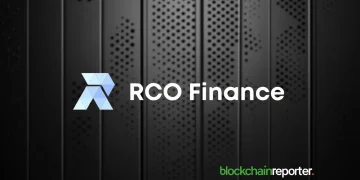Understanding different methods of swapping crypto
Millions of people actively use cryptocurrencies for investments, settlements, and transfers of funds. However, to start using cryptocurrency, you need to buy or exchange it somewhere. This can be done through centralized or decentralized cryptocurrency exchanges, crypto exchanges, or P2P platforms.
Centralized cryptocurrency exchanges (CEX)
Platforms, where users can trade both crypto and fiat. They coordinate cryptocurrency, trading on a large scale, using a similar business model to traditional stock exchanges.
Centralized exchanges usually offer their customers support, various trading pairs and gateways for receiving and withdrawing, as well as additional services, for example, stealing, storage capabilities, IEO, or DeFi services.
Decentralized cryptocurrency platforms (DEX)
Unlike traditional CEX, on such platforms, transactions and trades are automated by using smart contracts and decentralized applications. This type of crypto exchange is much safer since a well-written smart contract will not allow hackers to hack it.
P2P сryptocurrency exchanges
P2P platforms allow users to trade cryptocurrencies directly with each other, without the participation of a third-party intermediary. Unlike traditional exchanges, where transactions pass through the platform, P2P exchanges provide users with the ability to place listings for purchase or sale and conduct transactions directly.
Swap-exchanges
Swap exchanges are used to exchange one cryptocurrency for another within one wallet and one network. In this case, the user is exempted from using fiat funds, passing KYC, intermediaries, and exchanges, since all actions can be carried out immediately after connecting the wallet with minimal fees. Different swap exchanges are operating on both several and the same network.
Factors to consider when choosing a swapping method
When choosing a swapping platform, an investor needs to focus on some indicators. Such as:
1. Liquidity of the crypto platform. Large financial turnover shows enough money in the closures of the exchange, meaning that many traders use such a platform. So, such an exchange is high quality and the trader will not have any problems with it.
2. The reputation and security of the crypto exchange. Cryptocurrency exchanges are vulnerable. Therefore, it is reasonable to avoid storing or exchanging funds on platforms with a history of cyberattacks or scams. Most crypto exchanges offer basic security features such as two-factor authentication.
3. Fees associated with the swap are not the same everywhere. Cryptocurrency exchange platforms charge a commission every time you top up your balance, exchange, trade, or withdraw funds. Fees range from 0% to 5%, depending on the platform, payment method, network congestion, and transaction type.
4. The number of trading pairs on the cryptocurrency platform and their market rate. Depending on your trading interests, it is important to know which cryptocurrencies are supported by the exchange. While some P2P exchanges specialize in popular coins such as Bitcoin and Ethereum, others may offer a wider selection of altcoins.
5. Speed of the swap. The speed at which cryptocurrencies are converted refers to the time it takes to complete a transaction involving the exchange of crypto for fiat or other asset. Several factors can influence this. For example, network congestion, transaction processing time, and cryptocurrency exchange platform speed.
6. Match cryptocurrency rates across platforms. When exchanging, it is very important to pay attention to the course. At different venues, it is very different. In addition, cryptocurrencies themselves are very volatile. If you do such an analysis yourself, it takes you a lot of time. To reduce such an important resource, there are aggregators of crypto exchanges, such as SwapSpace. With the help of the aggregator, you can minimize the time looking for the most profitable offer, and verification, and also arrange a swap without extra fees.
Comparing the profitability of different swapping methods
Two of the most popular ways to swap cryptocurrency are exchanges and crypto exchanges. Exchanges most often trade between customers themselves. That is, someone sells, someone buys, and the platform brings these people together, and also demonstrates the current price at which operations take place.
Crypto exchanges more often work on the same principle as the usual currency exchange points. They set the price for buying and selling assets, and instead of bringing customers together, they conduct operations on their own.
For the client, there are several fundamental differences between the exchange and the exchanger. The exchange, as a rule, is created for active trading. For example, it can give margin trading tools, purchase futures, often hold contests for traders, etc. The fact is that the main profits of the exchange are obtained thanks to active trading, and therefore push customers to it.
At the same time, exchangers in most cases have limited functionality. In fact, there you can only buy and sell crypto, which facilitates trading for beginners and reduces the risks of trading losses.
You should keep in mind that crypto exchanges store customer funds independently. This is akin to a bank where individuals deposit their money, and the bank safeguards all the funds collectively while maintaining records of each depositor and their amounts. However, unlike banks, cryptocurrency exchanges do not have state-backed guarantees for the protection of customer assets. In the unfortunate event of an exchange going bankrupt, all funds are at risk of being lost. A prime example of this is the case of one of the largest exchanges, FTX.
In turn, crypto exchangers transfer the crypto to those accounts indicated by the client and have nothing to do with them. Thus, the responsibility for the reliability of the cryptocurrency wallet lies exclusively with the client, which increases the reliability of savings.
Another difference is that exchanges conduct full verification of the client, with confirmation of passport data and place of registration. Crypto exchangers do not require this. Only in some cases, a simplified identity verification (KYC) procedure is carried out, solely to prevent illegal use of the service for fraudulent purposes.
Tips for maximizing profitability when swapping crypto
Timing the market
It is important to understand that choosing the perfect moment to enter the market remains a subjective issue. There is no single rule to determine the best entry point, as it depends on your own strategies and approaches. However, technical analysis indicators, support and resistance levels, and news and events can help you make informed decisions. The key is to develop the strategy and execute it consistently, which will help you become a successful trader.
Diversifying assets
When compiling an investment portfolio, it is extremely important to diversify risks, that is, distribute investments between different crypto assets, and not buy only one for the entire deposit. This increases the stability of the portfolio: if some of the coins fall in price, others can, on the contrary, add and offset your losses.
It is optimal to invest in 7-12 projects. If there are fewer assets, the risks increase. If more, the portfolio will often have to be rebalanced (change the ratio of assets), profitability will decrease, and diversification will remain at the same level.
Another way to diversify is to buy crypto assets from different market sectors or run on different technologies. For example, coins with mining (BTC, LTC), assets of smart contract platforms (ETN, ADA, EOS), stablecoins (USDT, USDC), and DeFi tokens.
Staying informed about different swapping methods
There is no universal swapping method for everyone. Choose the most convenient option for you, coming from the chosen strategy of investing in cryptocurrency. In order not to miss out on maximum benefits, track market technology updates.
The SwapSpace Academy regularly publishes educational materials, covering these and many other aspects of the crypto market. Besides, the SwapSpace Blog will be handy in enhancing your crypto skills.
Do not ignore new knowledge, even top gurus of cryptocurrencies always learn something new and study new coins and technologies.
No need to rush into decision-making
Many inexperienced traders constantly monitor cryptocurrency rates, even after they have been sold. Users calculate how much they would receive if they made a more balanced decision. This is not very useful from a psychological point of view. However, it is really not worth rushing to buy or sell cryptocurrency.
For example, in 2009, Norwegian Christopher Koch bought $24 worth of Bitcoins. Soon after, he forgot about the complete operation. A few years later, Christopher saw the news of the BTC course. He was able to enter his purse and successfully withdrew the coins, receiving $886,000.
Inexperienced traders better start with a demo
Trading is a complex type of activity that allows you to earn on cryptocurrency. The user must have some knowledge and skills. Many people receive a lot of income through the timely sale or purchase of coins, but this cannot be called trading. Real investors know the technical nuances of the cryptocurrency field well and follow all the news. But even that experience doesn’t guarantee success.
Conclusion
It should be noted that choosing the best cryptocurrency-swapping platform requires careful consideration of various factors. It is important to consider factors such as security, usability, and asset diversity, as well as factors such as cost of services and regional availability. So traders can begin their journey in cryptocurrency trading with confidence, knowing they have chosen a robust and appropriate exchange to achieve their trading goals.
Using the SwapSpace crypto exchange aggregator, you will save time on a long analysis of offers and will be able to carry out the most profitable swap in a short time.























